
I was upstate again this past weekend, collecting Desi from his week with his grandparents, and took a couple of hours early Sunday morning to visit my favorite Saugerties birding spot, the Great Vly. As is to be expected in late August there were many young birds around getting the hang of living life on their own. Green Herons, Eastern Kingbirds, Tree Swallows, Cedar Waxwings, and a host of other species were successful in breeding and there were a lot of birds around. But what really drew my attention was a particular patch of trees that had quite a few small passerines foraging.
This young Chestnut-sided Warbler was one of two in the vicinity.
There were Tufted Titmice and Black-capped Chickadees, White-breasted Nuthatches and American Redstart. The birds were busy, intent on finding their forage, so they paid little attention to the giant biped with his tripod.
I particularly enjoyed watching and digiscoping the Red-eyed Vireo family that was foraging low and in good light.
Then I caught a quick glimpse of a small bird, very white below, that didn’t look quite like the Warbling Vireos that were also occupying the space. I’m not sure what keyed me in to this bird, but something seemed different. I tried to get another look at it but it seemed to have disappeared further back into another tree. Oh well. The Warbling Vireos were still around and I enjoyed watching a fledgling begging and its parent ignoring it.
But I’m hungry! Feed me! (Warbling Vireo parents are very stoic when annoyed by their young.)
Then I caught another glimpse of what I thought was the same bird that I had seen earlier. This time, all I saw was a patch of green on its back and a short tail. Was it the same bird? My mind was already trying to place it, coming up with Northern Parula (though I saw no real blue), Red-eyed Vireo (though it seemed too small), and Tennessee Warbler (though the lack of a good look at the face made that a tough call).
I waited, patiently, and finally the bird showed itself. It was a Tennessee Warbler and the identification was clinched by the tiny, pointed bill, the thin eye-line, and the green back and wings. Though the bird was a bit ratty, it was still a pleasant sight for this birder who has missed them since May.
Warbling Vireos have no eye-line, and their bill, while small, is thick and blunted with a hook.
Tennessee Warblers have a thin, dark eye-line and a small, thin, sharply-pointed bill.
I was reminded by this experience to bird every bird and to trust my gut. I could easily have passed the Tennessee Warbler off as a Warbling Vireo or let it go unidentified, but I stuck it out until the bird came back and picked up my Best Bird of the Weekend. Having such potentially confusing species in one patch, in one flock, gave me a new way to describe Tennessee Warbler. Tennessee Warblers are, plumage-wise, roughly halfway between Red-eyed and Warbling Vireos but the size of a Warbling Vireo. And the pointy bill is the clincher.
Not that this is a terribly difficult identification but it was a great experience to have these superficially similar species side-by-side for leisurely examination. Here’s hoping you get an opportunity like this, or maybe a tree full of several Empidonax flycatchers!
This bird needs more than a preening to look good!


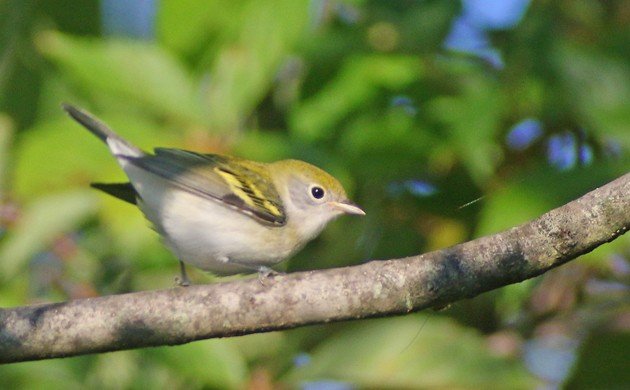
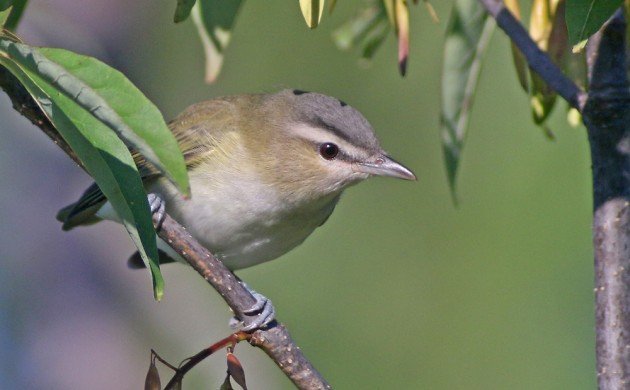
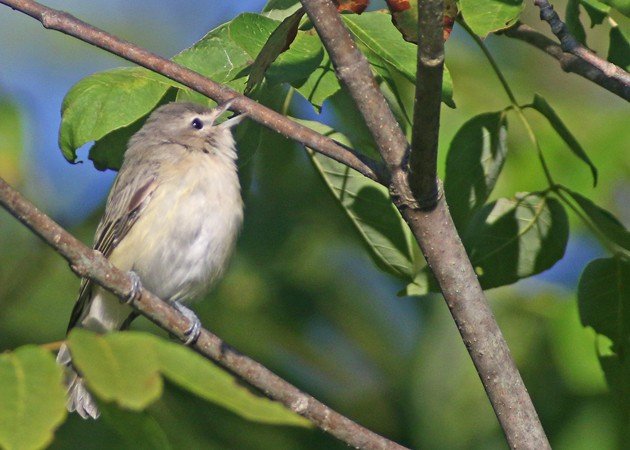
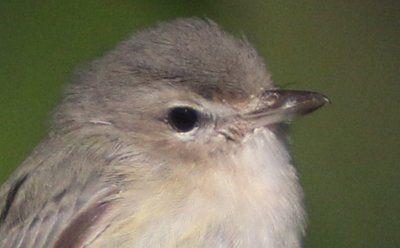
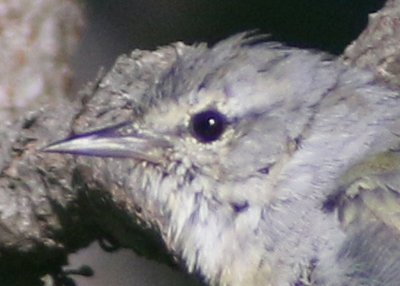
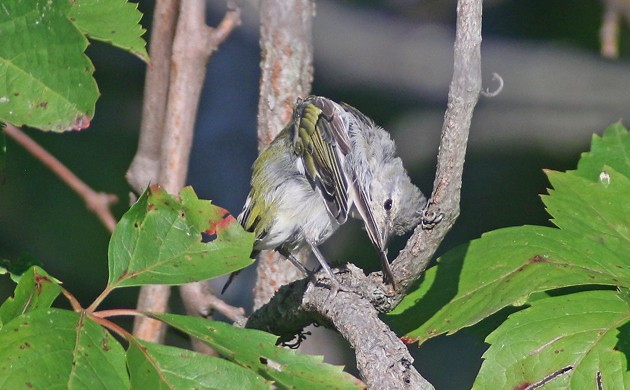











Leave a Comment